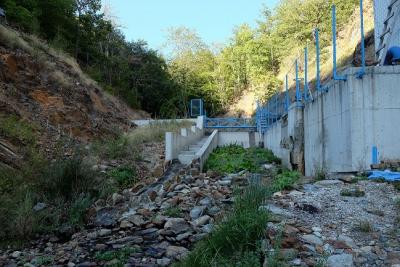‘Reckless’ bank investment threatening Balkan rivers

VIENNA – European development and commercial Italian banks are threatening the pristine rivers of south-eastern Europe with “reckless” investment in a vast array of hydroelectric projects, according to a study by CEE Bankwatch Network released on Friday.
In a wide-ranging survey of Albania, Bosnia-Herzegovina, Bulgaria, Croatia, Kosovo, Macedonia, Montenegro, Serbia and Slovenia, the group found that since 2005, both multilateral development banks such as the European Bank for Reconstruction and Development (EBRD), and commercial banks, have supported hydroelectric plants in the region.
Riverwatch’s Ulrich Eichelmann described the splurge as a “dam tsunami.”
727 million euros have financed 82 plants in the region by the EBRD, the European Investment Bank (EIB), and the World Bank Group to finance 82 plants. However, 37 of these projects took place in protected areas such as national parks or internationally recognised areas of high biodiversity.
The EBRD is the biggest known hydropower financier in the Balkans. The bank has supported a total of 61 plants with EUR 126 million, 29 of them inside protected areas, or internationally recognised biodiversity hotspots.
That financing has already had an effect, effectively eliminating one of the last populations of Prespa trout in Serbia through construction of the “Brajcinska reka 1” plant.
The bank had appeared more cautious in recent years but is now considering financing the Babino Selo plant and Neretvica cascade on the Vrbas and Neretivica in Bosnia-Herzegovina, both of which are situated in biodiversity-rich areas.
The study’s release coincides with the EIB and EBRD’s updates to their environmental and social policies this year. Pippa Gallop, Bankwatch’s Research Co-ordinator and one of the authors of the study, said that it marked a “crucial opportunity to tighten the rules and exclude financing in sensitive areas.”
Commercial money has also played a part. Tracking financing from private sources is more complicated given the lack of transparency within the sector. However, the group still uncovered 158 plants supported by commercial banks, of which 55 threaten are said to risk environmental damage.
One of the most prolific commercial banks was Italy’s Unicredit Group, who have financed 28 hydroelectric plants in the region since 2005.
Eichelmann labelled it “unacceptable” that Unicredit were “supporting even the worst projects. They have decent rules on financing hydropower in theory, but aren’t implementing them properly in practice.”
“The financiers need to take their share of the responsibility,” Igor Vejnović, Bankwatch’s Hydropower Policy Officer and co-author of the study, stated. “Reckless investment decisions can ruin hundreds of pristine Balkan rivers for good.”
tw



